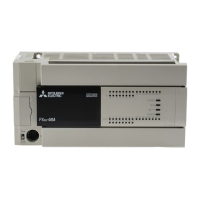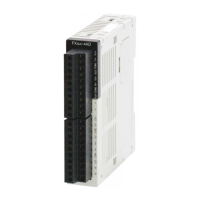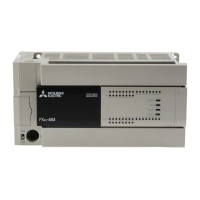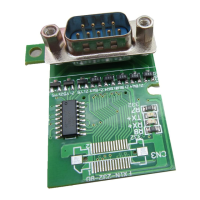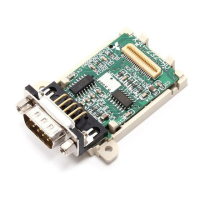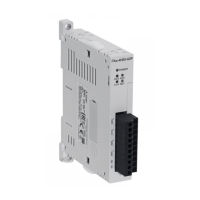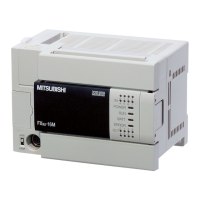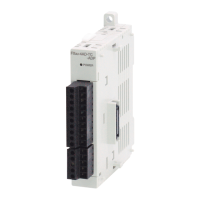306
FX3UC Series Programmable Controllers
User’s Manual - Hardware Edition
9 CC-Link/LT Built-in master ability (Only FX3UC-32MT-LT)
9.16 Data Link Processing Time
FX3UC Series Programmable Controllers
User’s Manual - Hardware Edition
9.16.2 Transmission delay time
The transmission delay time (the time until data is received) can be calculated by the following formula.
1. Transmission delay (Built-in master ← Input remote station)
This paragraph explains how to obtain the time it takes device (X) to turn ON or OFF on the main unit after a
signal is input to a remote I/O station.
1) Calculation formula
Transmission delay time [ms]
=SM × 2 + (2 - n)
*1
× LS + Remote station input response time
SM : Scan time of the PLC
LS : Linkscan time
n : SM/LS (whose decimals are omitted)
*1.0 if the value "2 - n" is 0 or less
2) Example
The scan time of the PLC is 5 ms, the link scan time is 1.2 ms, and the input response time of the remote
I/O station is 1.5 ms
Transmission delay time [ms]
= SM × 2 + (2 - n)
*1
× LS + Remote station input response time
= 5 × 2 + (2 - 4) × 1.2 + 1.5
n
= 4 (5/1.2 = 4.16..., then decimals are omitted)
↓
= 5 × 2 + (-2
*1
) × 1.2 + 1.5
= 11.5 [ms]
*1: 0 if the value "2 - n" is 0 or less
2. Transmission delay time (Built-in master → Output remote station)
This paragraph explains how to obtain the time after a device (Y) turns ON or OFF in the main unit until a
corresponding output turns ON or OFF in a remote station.
1) Calculation formula
Transmission delay time[ms]
=SM + LS × 2 + Remote station output response time
SM: Scan time of the PLC
LS: Link scan time
2) Example
The scan time of the PLC is 5 ms, the link scan time is 1.2 ms, and the output response time of the
remote I/O station is 0.5 ms
Transmission delay time[ms] = SM + LS
× 2 + Remote station output response time
= 5 + 1.2
× 2 + 0.5
= 7.9 [ms]

